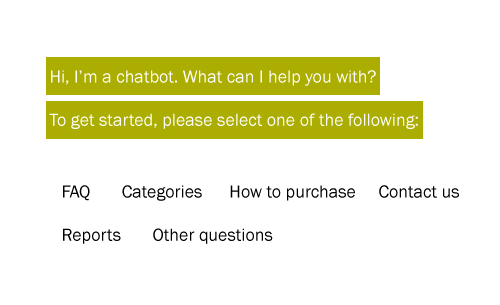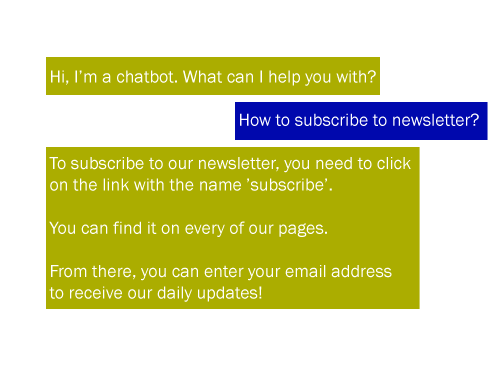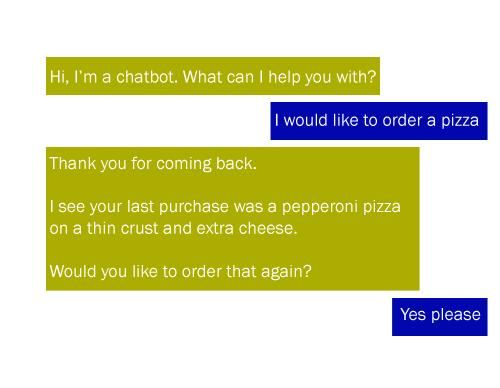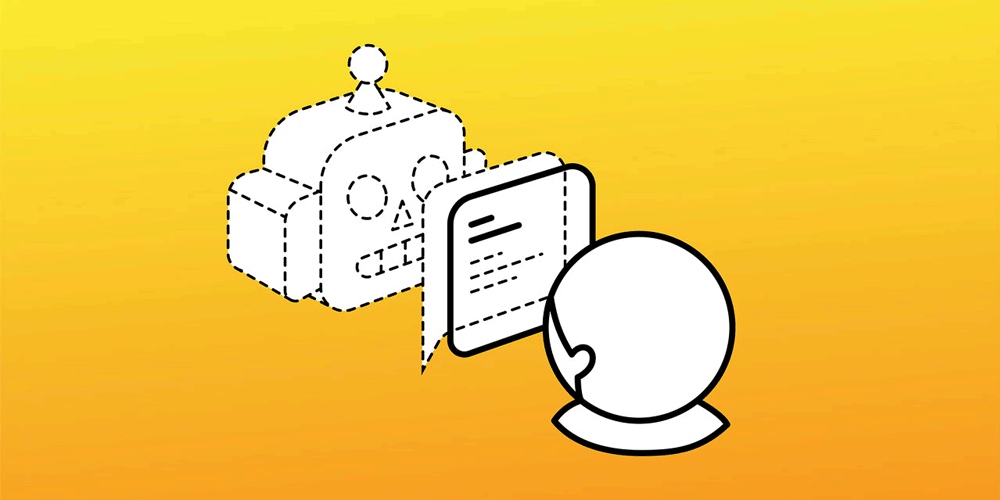When it comes to technology, things can be automated. The same goes with web, as they too can have an automated customer service and salesman.
They are chatbots, which can be described as computer software or an AI that conducts a conversation via auditory or textual methods. As time passes, chatbots have become increasingly convincing with their ability in mimicking how human speaks, and how humans would behave as a conversational partner.
On the web, chatbots are typically used as a dialog systems for various practical purposes, which usually include customer service or information acquisition.
If you are a business that wants to use these chatbots for automation, you shouldn't bring a gun to a knife fight. This is because chatbots aren't created equally.
Modern chatbots come in all shapes and sizes, and have varying levels of capabilities. A more basic chatbot for example, scans for keywords within input, to then pull a reply with the most relevant keywords, or the most similar wording pattern from its database. On the other hand, more advanced chatbots use sophisticated natural language processing systems and AI to carry on conversation just like how a normal human would.
So if you want to choose a chatbot for your business on the web, you should determine what you are selling, and whether or not you need more than just a replying bot.
Read: Chatbots In Changing UX For The Better, And The Reasons Why You Should Or Shouldn't Use Them
Menu/Button-Based Chatbots

These chatbots are considered the most basic type of chatbots.
In most cases, these chatbots present decision tree hierarchies to users in the form of menu items or buttons. This is somehow similar to the automated phone menus we have all interacted when calling businesses. These chatbots require users to make several selections for it to get to the ultimate answer.
What this means, chatbots that fall into this category, are the scripted kind of chatbots.
These chatbots are usually sufficient in most cases.
For example, if you're dealing with users that ask frequently asked questions, these chatbots can come in handy. However, they fall short when it comes to more advanced scenarios where variables are just too many. These chatbots are also very limited in their knowledge, as more complex questions would just confuse them, making them return no answer.
It’s also worth noting that menu/button-based chatbots are the slowest in terms of getting users to their desired answer. These chatbots treat all customers equally, and don't store necessary information to carry on conversation in an engaging manner.
Keyword Recognition-Based Chatbots

A more sophisticated chatbots that are more reliable and knowledgeable.
These chatbots are unlike menu-based chatbots, as they can listen to what users type and respond appropriately, or at least try to. These chatbots utilize customizable keywords and AI to determine how to respond appropriately to users.
For example, if a user asked the question "How to pay for items using credit card?" The chatbot would likely use the keyword "pay", "items", and "credit card", to best determine which answer to respond with.
Keyword recognition-based chatbots can be pretty smart, as it can answer most questions in common scenarios. However, when it comes to answering a lot of similar questions, these chatbots may fall short. These chatbots can be confused as keyword redundancies between several related questions can make it misunderstood queries.
One solution to this, is by using a hybrid of keyword recognition-based and menu/button-based. These chatbots provide users with the choice to try to ask their question directly, or use the chatbot’s menu buttons if the keyword recognition functionality is yielding poor results, or if the user requires some guidance to find their answer.
Contextual Chatbots

Contextual chatbots are the most advanced, if compared to the menu/button-based and keyword-recognition chatbots.
These chatbots utilize machine-learning technology and artificial intelligence to remember conversations with specific users, enabling them to learn and become smarter over time. Unlike keyword recognition-based chatbots, contextual chatbots can self-improve based on what users are asking for and how they are asking it.
For example, is a user wants to order a pizza, a contextual chatbot will store the data from each conversation to learn what the user likes to order. Most notably, the chatbot will remember the user most common order, their delivery address, as well as their payment information. Because the chatbot is contextual, it can engage with the user in a more friendly and life-like manner.
So instead of the user having to respond to several questions, the chatbot can fill the inquiries automatically, like answering: "How do like your pizza topping this time?" or "Your pizza is on the way." Users can just agree or disagree with the bot's solution, further enhancing its ability in future uses.
Contextual chatbots rely heavily on data for their operations. If data is not sufficient, these bots will fall short.
Which Chatbot Is For You?

To decide which chatbot will make your customer happy, you have to think like the user. Try to step in their shoes and become the user of the chatbot. Here, you will see the value the chatbot has, and you will also experience the value you are receiving.
Ask yourselves:
- Do you want to deal with people 24/7?
- Do you have a brand that is considered fit to be represented by a non-human representative?
- Are you dealing with a huge pool of customers who frequently contact you?
- Are you looking for a cost-efficient method that is also time-efficient to deal with customers?
If you answer all the above questions with yeses, then proceed in choosing the chatbots you need.
First is the menu/button chatbot. Do you think this chatbot is enough? Or do you need a more personalized method to better serve your customers? The menu/button-based chatbots can be great if you don't deal with a lot of products, in circumstances that your customer don't really need to talk to you that often with complex questions.
Most businesses on the web would only need chatbots will simple menu buttons, which should point users to the right direction.
But for dealing with more complex queries, like on e-commerce platforms, the keyword-based bot can be the better solution. E-commerce sites may sell a lot of things, dealing with a diverse amount of users, and accepting many types of payment systems. Their websites may have a lot of menus which may confuse users.
Here, the keyword-based solution should be sufficient.
Using a keyword-recognition based chatbot should give your users the ability to talk to your bot, which makes the vibe more personal.
In most cases, this is already enough.
But for more businesses that deal with more complex customer relations with a more technical queries, AI-powered bots would probably be the better choice. Using AI, the bots can engage with customers, and can answer following questions in a more engaging way.
The downside of this chatbot is that it needs a lot of data to start with. Without sufficient information in training and from user input, the chatbot can be practically useless.
Remember that the right chatbot is the one that conveys the best value proposition to your users. Your choice should be able to provide an improved user experience, 24/7, if compared to the traditional human-powered customer service.
Read: The Rising Popularity Of Chatbots: Great Assistants For Humans, Or Permanent Job Replacements?
